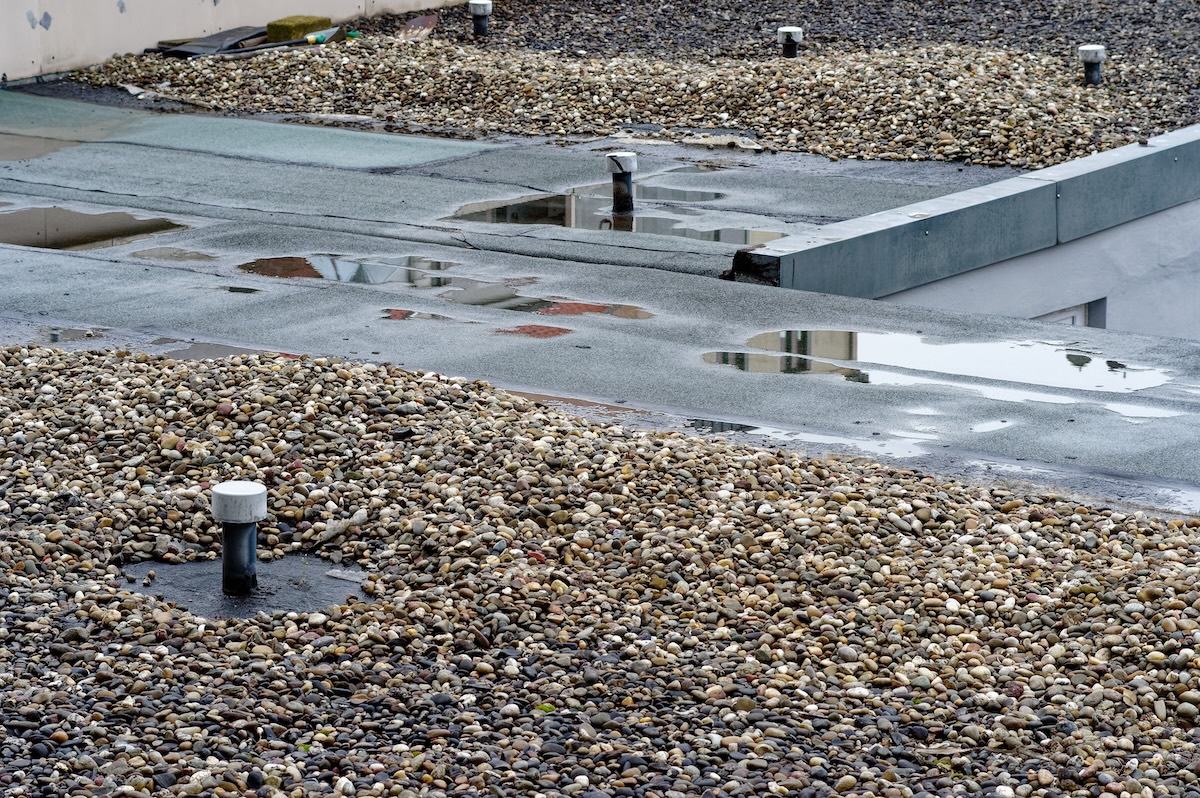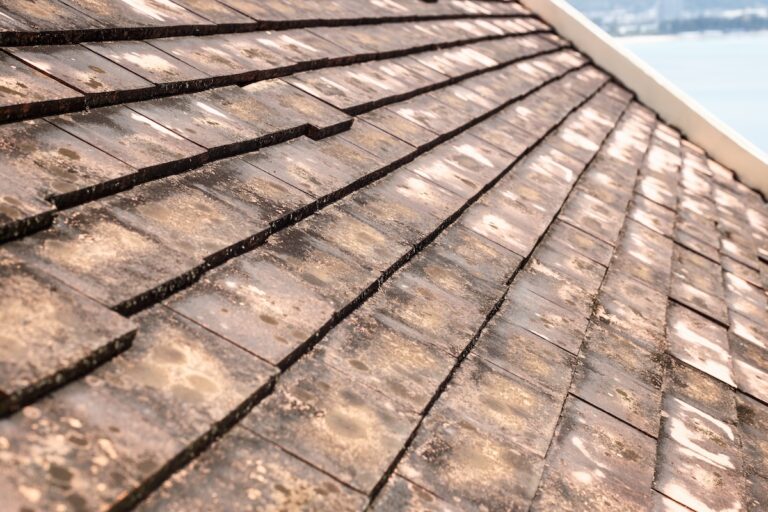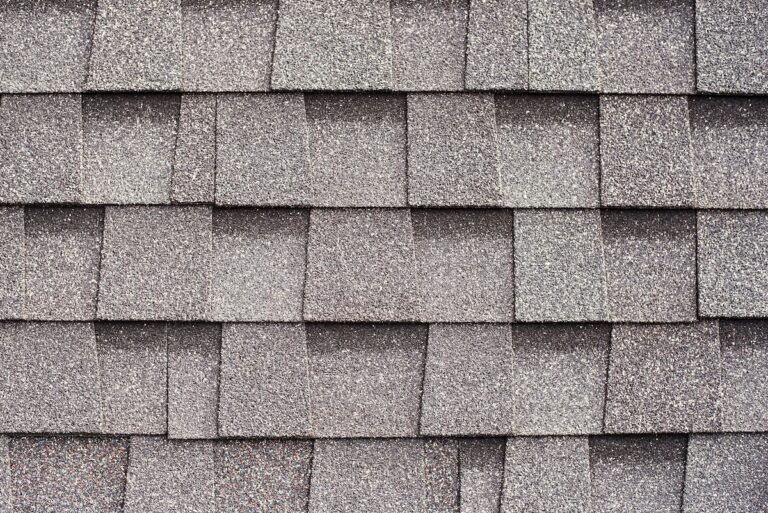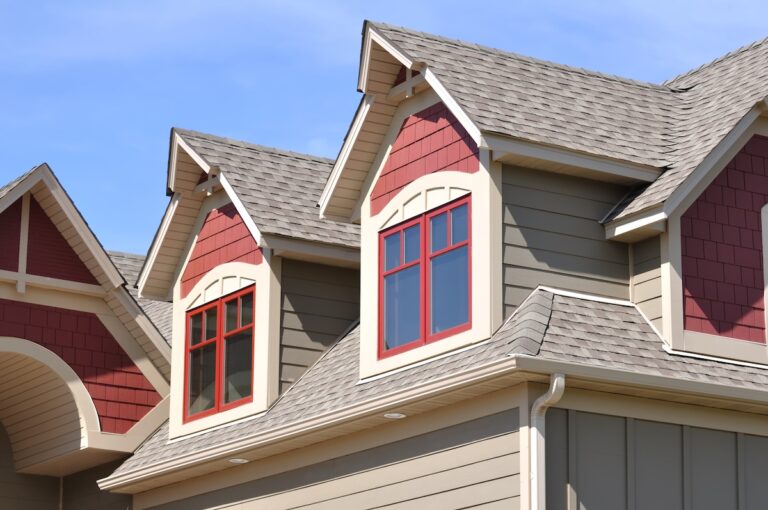When you manage a building, the state of your roof might not always be top of mind—until something goes wrong. Roof water damage is one of the most common (and costly) issues commercial property owners and managers face. A leaking or damaged roof can lead to several complications, from:
- Structural issues
- Operational disruptions
- The impact on your tenants or business operations
We’re here to help you understand the causes, warning signs, and solutions to protect your commercial roof. By staying vigilant, you can save time, money, and hassle in the long run.
What is Commercial Roof Water Damage?
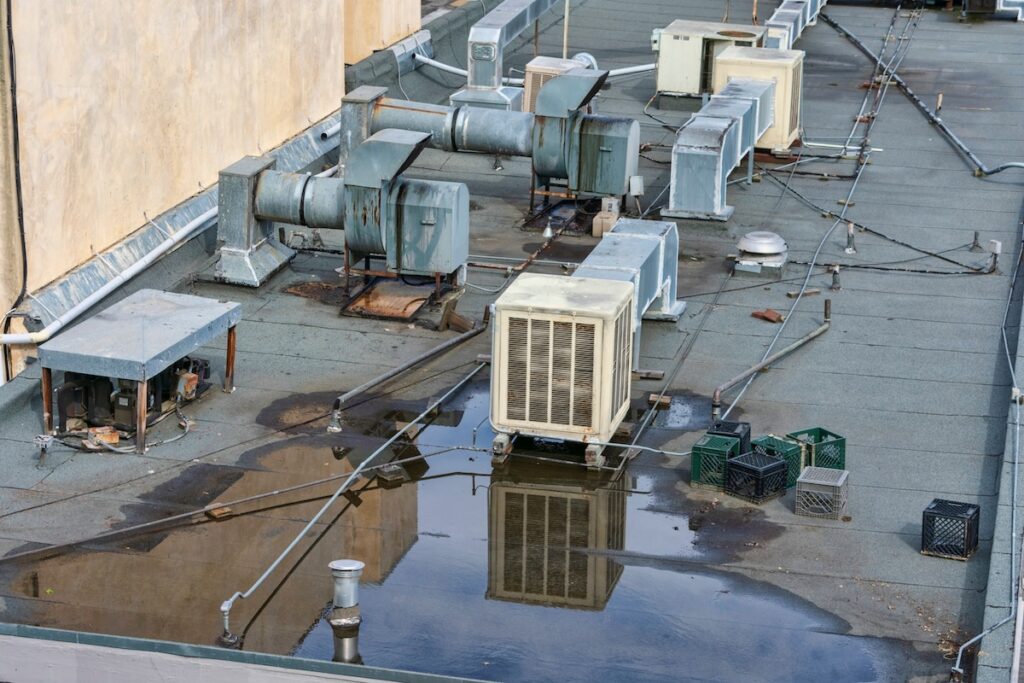
Commercial roof water damage occurs when water seeps into your roofing system and begins to compromise its structure. This can lead to leaks, mold growth, insulation damage, and even structural failure if left unchecked. Unlike residential roofs, commercial roofs often feature flat or low-slope designs, which can make them more susceptible to water pooling and penetration.
Water damage doesn’t happen overnight; it typically results from a combination of factors over time. The key to avoiding significant damage is recognizing the early warning signs and addressing them promptly.
Common Causes of Roof Water Damage
Understanding the causes of roof water damage can help you take preventative measures. Here are some of the most common culprits behind water-related issues in commercial roofs:
- Poor Drainage Systems: Flat or low-slope roofs often rely on efficient drainage systems to channel water away. When drains, gutters, or downspouts are clogged with debris, water can pool on the surface of your roof. This standing water can lead to flat roof leaks or even accelerated aging of the roof materials.
- Aging Materials: Roofing materials degrade over time due to constant exposure to harsh weather conditions, UV rays, and fluctuating temperatures. Once materials like membranes or flashing weaken, they become more prone to water infiltration.
- Improper Installation: Even the highest-quality materials won’t protect your property if they’re not installed correctly. Poor workmanship can lead to gaps, bubbles, or other weaknesses that allow water to enter your roofing system.
- Weather Damage: Severe weather events, such as heavy rain, hail, or strong winds, can damage your roof, leading to cracks, punctures, or tears in the membrane. Snow and ice can also build up, causing water pooling when they melt.
- Ignored Maintenance: Routine maintenance is crucial in preventing roof water damage. Over time, even minor issues like loose flashing or small cracks can grow into major problems if left unaddressed.
- HVAC and Equipment Issues: Many commercial roofs house HVAC units and other machinery. Improperly maintained equipment can leak water onto the roof, or poorly sealed installations can create entry points for water.
6 Warning Signs of Commercial Roof Water Damage
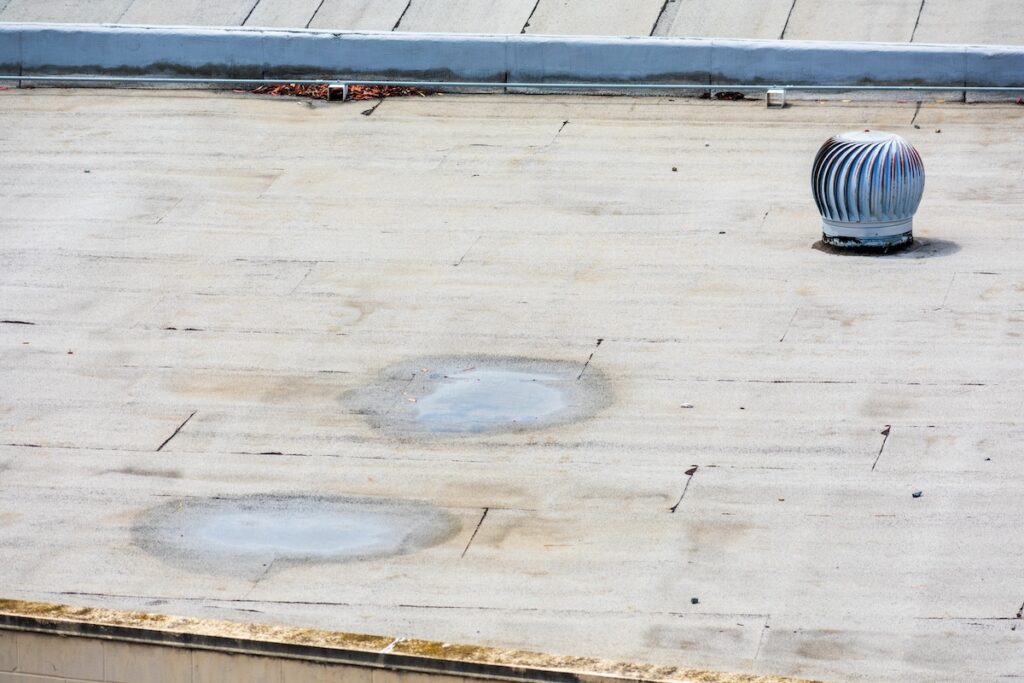
Knowing what to look for can help you catch issues early before they escalate. Keep an eye out for these warning signs of water damage on your commercial roof:
1. Interior Leaks or Water Stains
Water dripping from the ceiling or discoloration on walls and ceilings often indicates a leak. These signs shouldn’t be ignored, as they suggest water is already penetrating your roofing system.
2. Ponding Water
If you notice standing water on your roof after a rainstorm, this is a sign of drainage issues. Prolonged ponding can accelerate wear and lead to leaks.
3. Mold or Mildew Growth
Both inside the building and on the roof surface itself, the presence of mold or mildew could indicate water is trapped somewhere it shouldn’t be. This not only damages the structure but also poses health risks.
4. Cracks, Blisters, or Bubbling
Inspect your roof for any deformities in the membrane, such as cracks, blisters, or bubbling. These weaken the roof’s ability to resist water.
5. Sagging Areas
A sagging roof is a serious warning sign that water has compromised the structural integrity of your building. Address this immediately to prevent further damage or collapse.
6. Peeling or Curling Flashing
Flashing protects the edges of your roof and seals areas around vents, skylights, and chimneys. Any damage to flat roof flashing can create an entry point for water.
How to Prevent Roof Water Damage
Preventing water damage starts with proactive measures. Here’s how you can protect your commercial roof and extend its lifespan:
🗓️ Conduct Regular Inspections
Schedule routine inspections at least twice a year, preferably in spring and fall. Look for signs of wear and tear, such as cracks, ponding water, or loose materials.
🍂 Keep Gutters and Drains Clear
Clean and clear your drainage systems regularly to prevent water buildup. Gutter cleaning is particularly important after seasons with heavy debris accumulation, like fall.
💵 Invest in Quality Installation
Ensure your roof is installed by experienced professionals who use high-quality materials. Proper installation is the first line of defense against water damage.
🩹 Seal Vulnerable Areas
Areas around HVAC units, vents, and skylights should be sealed properly. Check these areas frequently to ensure seals haven’t weakened or broken down.
🧰 Repair Damage Promptly
Don’t wait to fix minor issues. A small crack or loose piece of flashing can quickly turn into a costly leak if ignored.
🤔 Consider Roof Coatings
Roof coatings create an extra layer of protection against water, UV rays, and other damaging elements. They can help extend the life of your roof while enhancing water resistance.
👷🏼♂️ Hire Professionals for Maintenance
Partner with a trusted roofing company, like G. Cannon Roofing, for regular maintenance services. We’ll ensure your roof stays in top shape, protecting your property and providing you with peace of mind.
Why Addressing Roof Water Damage Matters

Water damage doesn’t just impact your roof—it can affect many aspects of your building and operations. Here’s why addressing it promptly is critical:
- Cost Savings: Catching and repairing damage early prevents small issues from becoming expensive repairs or replacements.
- Preserving Structural Integrity: Water damage can weaken the entire structure of your building, jeopardizing its safety.
- Avoiding Business Disruptions: Leaks and repairs can cause downtime for your business, affecting productivity and tenant satisfaction.
- Health Considerations: Mold and mildew resulting from water damage can lead to health issues for employees and tenants.
Partner with G. Cannon Roofing for Expert Solutions
At G. Cannon Roofing, we specialize in helping building owners and property managers protect their commercial roofs from water damage. With decades of experience, our team understands the unique challenges posed by flat and low-slope roofs.
Here’s why businesses trust us:
- Trusted Expertise: Certified professionals with extensive experience in commercial roofing.
- Proactive Maintenance Plans: Regular inspections and preventative care tailored to your building’s needs.
- Effective Repairs: Swift, high-quality repairs that restore your roof’s integrity and protect your investment.
- Transparent Communication: Clear explanations and honest recommendations every step of the way.
Your roof is more than a protective covering—it’s an essential part of your building’s structure and the well-being of your business operations. By understanding the causes, warning signs, and preventative measures associated with roof water damage, you can stay ahead of common issues and protect your investment.
If you’re ready to take the next step in safeguarding your commercial roof, G. Cannon Roofing is here to help. Get in touch today for a thorough inspection and the professional care your property deserves.
